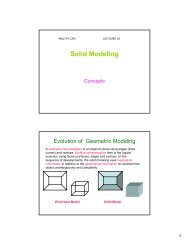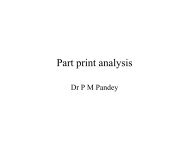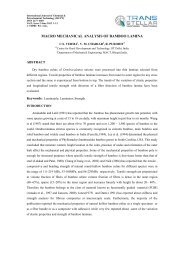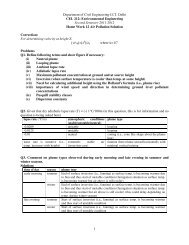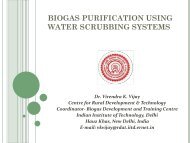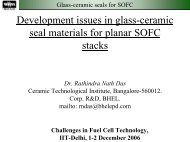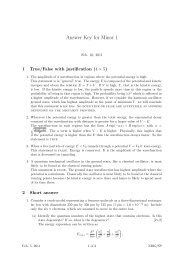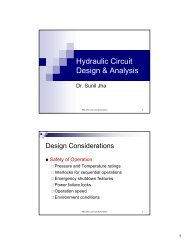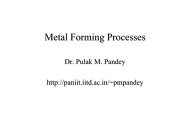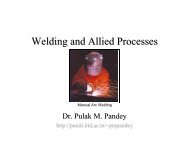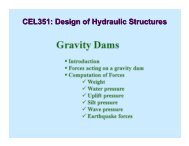Automotive spark-ignited direct-injection gasoline engines
Automotive spark-ignited direct-injection gasoline engines
Automotive spark-ignited direct-injection gasoline engines
Create successful ePaper yourself
Turn your PDF publications into a flip-book with our unique Google optimized e-Paper software.
462<br />
F. Zhao et al. / Progress in Energy and Combustion Science 25 (1999) 437–562<br />
Fig. 22. Spray-tip penetration as a function of the <strong>injection</strong> duration and fuel-rail pressure [95]: (a) spray-tip penetrations of the initial and main<br />
sprays as a function of <strong>injection</strong> duration; and (b) effect of the fuel rail pressures on spray-tip penetration for different loads.<br />
chamber filled with tracer particles of polymer microballoons.<br />
The airflow structure was mapped by the trajectories<br />
of the tracer particles, which are shown in Fig. 25. It<br />
was found that an intense, turbulent airflow field is generated<br />
at the center of the hollow cone due to the movement of<br />
the fuel spray.<br />
2.3.3. Effect of injector sac volume<br />
The sac volume within the injector tip between the pintle<br />
sealing surface and the tip discharge orifice plays an<br />
important role in the transient spray formation process because<br />
it contributes to the formation of large droplets at the initiation<br />
of fuel <strong>injection</strong> and can influence the spray cone dynamics.<br />
The sac volume in any particular injector design is the<br />
geometric space within the injector tip that contains fuel<br />
which is not at the fuel line pressure. Fuel remaining from<br />
the previous <strong>injection</strong> resides in this space, and as it is downstream<br />
from the pintle sealing line, this stagnant fuel is not at<br />
the rail pressure. When the pintle is first lifted, this portion<br />
of liquid fuel does not have enough tangential velocity to<br />
form a hollow cone spray, and thus is generally injected<br />
<strong>direct</strong>ly along the injector axis as poorly atomized droplets<br />
having relatively high velocities. This is denoted as the sac<br />
spray, but descriptive terms such as sling spray, core spray<br />
and center spike may also be encountered in the literature.<br />
Thus, the sac and main sprays in most GDI injectors are<br />
actually two distinct sprays, each having its own drop size<br />
distribution. Therefore, a large sac volume can significantly



